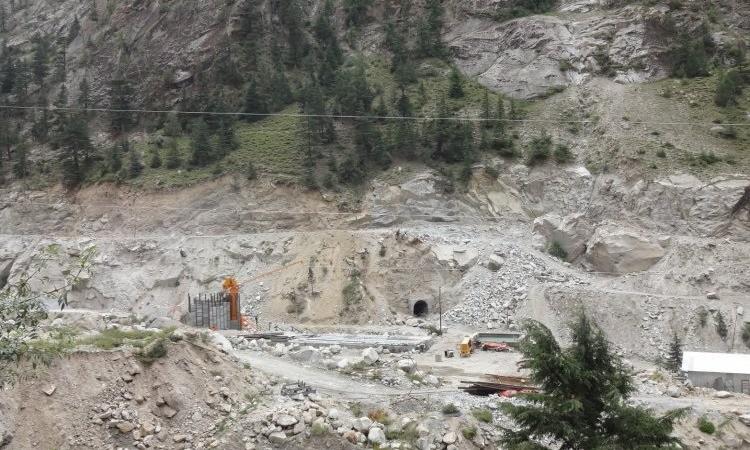
Hydropower development has been given topmost priority in the resource rich state of Himachal Pradesh. It has been hailed as a solution to develop the region and also provide an answer to the unending electricity needs of industry and agriculture. Many of these projects have been blamed as causing irreversible damage to the environment, natural resources such as water and forests in the area, as well as to the increase in disasters that result in displacing farmers and villagers.
Aggressive construction at Kinnaur and the resulting devastation
The paper titled 'Kinnaur’s curse? Environmental threat from hydroelectric projects' published in the Economic and Political Weekly, describes the threat faced by Kinnaur, one of Himachal Pradesh's most ecologically fragile regions, from hydroelectric power projects that are being pushed aggressively in the area.
The paper describes how the National highway stretch in the once peaceful Kinnaur district now looks like a war zone with roads lined with trucks, dumpers, mixers, diggers, crane pipes and cables along with huge drilling and excavation operations of the mountains on the roadside. Explosives are also being used to blow up mountains in the area to construct the 450 MW Shongthong Karchham project. The muck and debris in the area is making the road vulnerable to accidents.
What remains relatively unknown is the devastating effects that these interventions have brought in the villages of Kinnaur district such as increase in the frequency of extremely heavy rainfall and snowfall related events in upper parts of Kinnaur leading to floods, landslides, erosion and damage to agriculture fields, apple orchards and cattle apart from disrupting daily life. The infrastructure of the region has collapsed causing losses estimated at Rs. 2,500 crore.
The villages remains cut off from the highway and farmers have to spend large sums of money to cross the highway. Besides tremendous losses to infrastructure, the interventions have also affected water sources in the area with drinking water sources drying up or disppearing leading to severe water scarcity during summers.
Apathy and aggression from the government
However, it seems that the State government or the Ministry of Environment, Forest and Climate Change (MoEF) seem to or want to ignore the fact that there exists a linkage between depletion and rampant construction, and that it needs to be studied rigorously by scientific and independent agencies. The only action that the goverment seems to be taking is providing relief packages.
Even environmental impact assessment studies that are being done are not useful as many of them are of poor quality and the locals term them as being biased and more pro-hydroelectric projects. The report argues that the observed gradual drying up of water sources are a temporary phenomenon and that they would re-emerge in the long run, a fact that has been proved to be wrong in the long term.
Gradual shift in the local response to hydropower development in the region
With these developments, there has been a shift in the mood and local acceptance to hydropower. For example, in the Pooh region, village gram sabhas have passed resolutions against the proposed Sumla Yangthang, Yangthang Khab and Chango Yangthang projects. The safety demands, resistance and dissatisfaction put up by the workers from the factories working on these hydroelectric projects about their working conditions has also helped in giving momentum to the local resentment in lower Kinnaur area of Himchal Pradesh.
Today, the people of Kinnaur are forced to cope with a rapidly shifting landscape and the accompanying geological, ecological, social, economic and cultural changes in the area. Many of them express feelings of hopelessness and regret for the support they initially showed to the projects in the hope of getting jobs and contracts, or due to government pressure or because of being influenced by the development rhetoric offered by political representatives. The rapid pace of 'development' however, continues!
Please download a copy of the paper below.